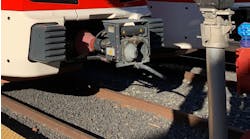Metro on July 27, celebrated the first year of Silver Line service from Largo Town Center to Wiehle-Reston East, showcasing Metro as an economic engine and serving as a convenient transportation alternative linking downtown DC and Tysons.
Marking the occasion, Metro Interim General Manager and CEO Jack Requa joined elected officials and business leaders in Tysons Corner at a Transportation Summit to discuss how the Silver Line is helping realize the economic promise of the Tysons community and changing the way people commute by reducing traffic congestion.
“Phase 1 of the Silver Line has exceeded expectations not only in terms of ridership, but also in terms of the economic opportunities it is creating in the Dulles Corridor and across the region. Completion of Phase 2 will accelerate the transformation taking place along the corridor and provide a vital rail link to Dulles International Airport for the entire region,” Congressman Gerry Connolly said. “For those of us who have worked on this project for more than two decades, it is exciting to see the vision we laid out taking shape. Thanks to the Silver Line, people are already getting out of their cars and walking to work, to eat, and to shop in Tysons and Reston. And when the entire 23-mile Metrorail line is completed, I expect it will further enhance quality of life and employment options for Northern Virginians and other residents of the region.”
According to Wells + Associates, since the Silver Line opened last year, traffic in Tysons along Route 123 has decreased and multiple intersections have experienced up to 15% fewer cars during peak hours.
Ridership
More than 35,000 weekday trips were taken to or from the five new Silver Line stations last month, an average of 17,088 riders per day. Wiehle-Reston East continues to be Silver Line’s commuting powerhouse, continuing to surpass first-year ridership projections. With convenient bus transfers, a secure bike room and a large parking garage, Wiehle-Reston East’s commuters make up around half the line’s ridership.
“The opening of the Silver Line was a key milestone in the Reston community. As a Restonian and representative of the community, we are truly grateful for this public investment in mass transit,” said Supervisor and WMATA Board Member Catherine M. Hudgins. “The Silver Line will provide the opportunity to create new transit villages to our Reston community for years to come.”
Ridership patterns at the Tysons-area stations (i.e. McLean, Tysons Corner, Greensboro and Spring Hill) are more varied, with afternoon peak ridership higher than other time periods, including the morning peak. Additionally, Tysons Corner Station is one of the few stations on the entire Metrorail system where ridership is higher on Saturday than on weekdays.
Economic Growth
The Silver Line also continues to support economic development throughout the region. In total, more than 105 million square feet of new development is in the construction pipeline within a half-mile of a Silver Line Metrorail station, including 20 development projects that are already underway.
“The economic development and impact the Silver Line has created and will continue to create is a boost to the economy for our entire region,” said Congresswoman Barbara Comstock.
As a link to some of the area’s largest employment centers, the Silver Line is connecting businesses to workers throughout the region. A number of companies have signed on to the SmartBenefits program, helping to attract and retain workers by offering a better way to get to work using public transit and saving money doing it.
During the event, Metro recognized three businesses along the Silver Line – Kimley-Horn, Northrop Grumman, and Arlington Avalon North – for promoting the use of the SmartBenefits program.
“Businesses along the Silver Line are finding that access to public transit provides new opportunities for attracting and retaining employees,” said Metro Interim General Manager and CEO Jack Requa. “They’re taking advantage of Metro’s SmartBenefits program—a versatile and valuable benefit that allows employees to save money on their daily commute.”
From creating jobs, to relieving traffic congestion and providing a vital new link in the region, the Silver Line is improving people’s quality of life. The impact can be seen in a new series of ads based on actual customer testimonials about how Silver Line is making a difference.
In the first of four TV spots, “Alan,” played by an actual Metro rider and local actor named Chris Kauffman is shown reading a newspaper as he awaits a Silver Line train after having the recent epiphany to, “Avoid traffic by taking Silver Line.” The 30-second TV spots will begin airing later this summer to inspire the region to “See where Silver can take you.”
While the economic development that is underway along the Silver Line is expected to rapidly deliver additional riders, Metro hopes the ads will prompt others to try the line to commute to work, school, shopping and recreation, and other destinations throughout the region.
Silver Line rail service began at noon on July 26, 2014, with the departure of the inaugural train from Wiehle-Reston East Station in Fairfax County, Va., bound for Largo Town Center in Prince George’s County, Md. It was the first time a new color had been added to the Metro map since the Green Line opened in 1991.
With the opening of the five new stations in Silver Line’s first phase, Metrorail now serves 91 stations across a 117-mile system. Work has already begun on phase two of the Silver Line, which will extend another 11.4 miles to six new stations including Reston Town Center, Herndon, Washington Dulles International Airport and Ashburn. The combined phases of the Silver Line not only mark the largest expansion in Metrorail history, but also make it one of the most complex transportation projects in the United States. Silver Line construction is being managed by the Metropolitan Washington Airports Authority.

